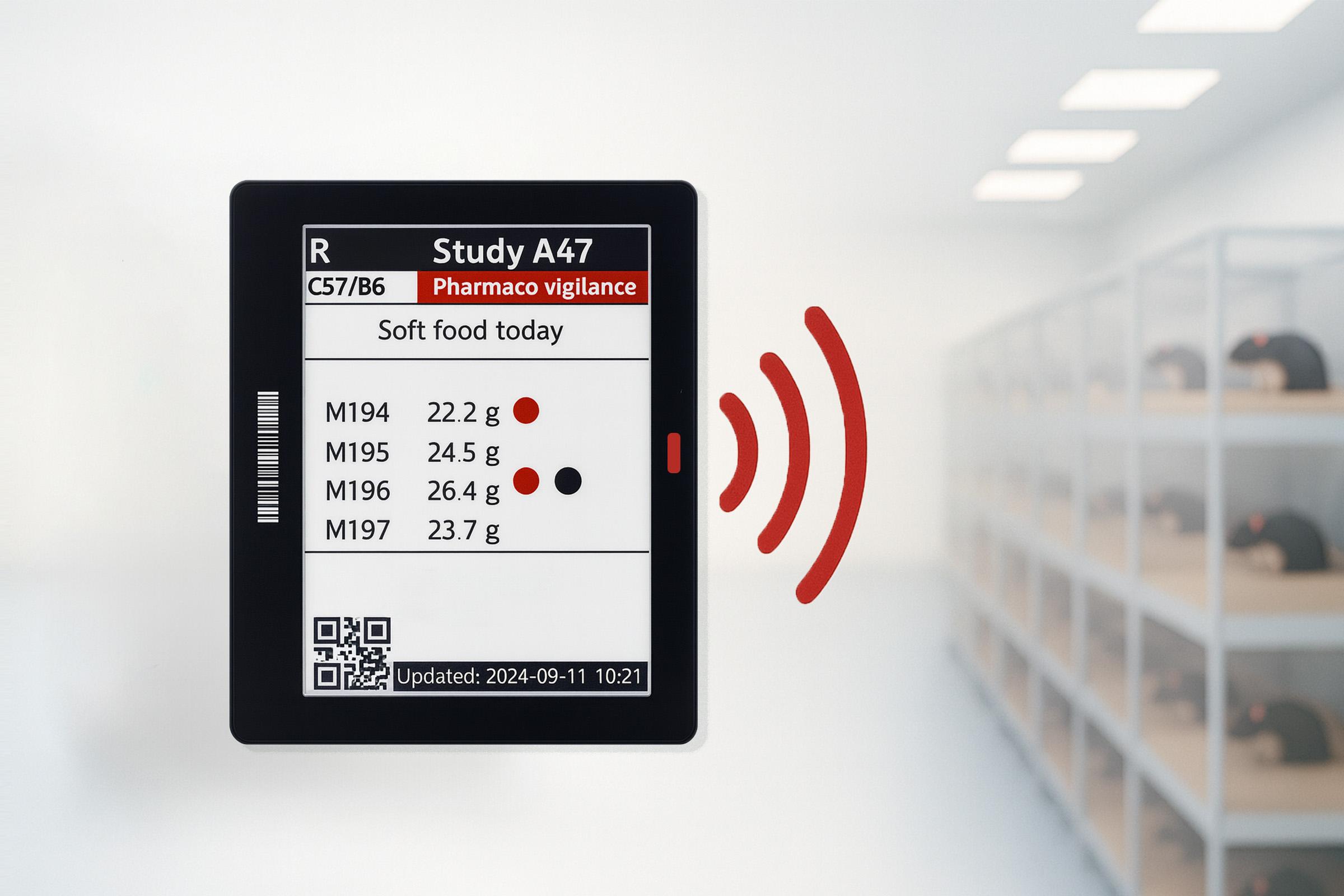Utilizing 7-color LED indicators to meet the specific needs of each facility
In animal facilities, even small improvements can save time, reduce errors, and make daily routines easier. Our slim-line digital cage cards feature LED indicators in seven colors, giving facilities the flexibility to adapt signals to their specific workflows. From locating cages to marking procedures and highlighting important tasks, LEDs turn cage labeling into a reliable, practical tool.
Why LEDs Matter
Traditional paper cage cards only display static information. Digital cage cards automatically update study data and add clear, visual cues. With a simple blink or color change, LEDs provide clear signals exactly when and where they are needed.
Practical Use Cases for LED Indicators
LED indicators can be adapted to a wide range of research and animal care needs, such as:
- Locate cages quickly: Activate LEDs to guide staff directly to the correct cage in large facilities.
- Highlight scheduled animals: Mark animals due for dosing, scans, or endpoint collection.
- Differentiate study groups: Use color coding to avoid mix-ups in complex studies.
- Signal welfare checks: Blink LEDs to indicate animals requiring monitoring or veterinary review.
- Remind staff of tasks: Highlight routine actions like cage cleaning, enrichment, or health checks.
- Guide daily operations: Identify cages scheduled for dosing, weighing, or sampling.
- Mark restricted cages: Clearly signal quarantine or biohazard cages.
- Support training and orientation: Demonstrate workflows or guide visitors with LED cues.
Application in Animal Research Facilities
LEDs can be configured to represent different statuses depending on facility needs. Examples include:
- Red LED: Marks cages requiring immediate attention, such as animals under observation or in urgent care.
- Blue LED: Identifies cages linked to a specific experiment, research group, or training activity.
- Green LED: Confirms cages already checked, with animals in good health requiring no further action.
- Yellow LED: Flags cages scheduled for upcoming procedures, observations, or routine tasks.
Each facility can define which signals fit their workflows, research priorities, and compliance needs.
From Static Notes to Digital Tools
By moving from paper to digital, facilities can streamline workflows and reduce reliance on manual processes. Digital cage cards with automatic updates and LED indicators act as dynamic tools that support daily work, improve accuracy, and provide consistent visual guidance.
The benefits include:
- Fewer errors in data handling and animal identification
- Faster, more efficient workflows for staff
- Consistent support for animal welfare and compliance
Our LED-enabled digital cage cards give facilities a practical way to stay organized, improve daily operations, and maintain high standards of research and animal care.


